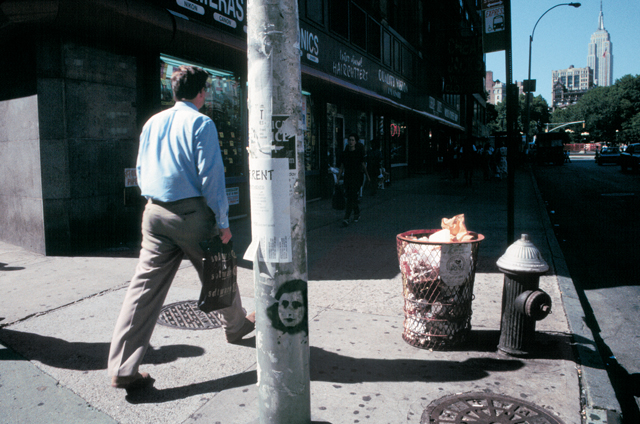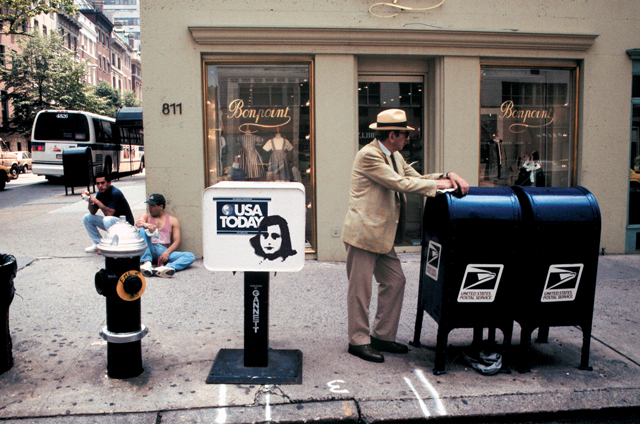Anne in New York, 2000
Anne In New York is a series of images that investigates the representation of Anne Frank as an American icon of the Holocaust. [Read the full artist’s statement below.]
Exhibitions:
October 2000
If All Men Are Good..., Staller Center for the Arts, SUNY Stony Brook, New York
February 2000
Images in a Post-Photographic Age, Visual Studies Workshop, Rochester,
New York; and CEPA Gallery, Buffalo NY
















Artist’s Statement
Anne In New York is a series of images that investigates the representation of Anne Frank as an American icon of the Holocaust. There is a certain irreverence to using Anne Frank’s visage in anything other than a sacred context. By doing so, I attempt to wrench the viewer out of the more familiar trappings of Holocaust imagery: barbed wire, flames, black and white images of trains, etc.
“She is perhaps Hitler’s best known victim, but what was Anne Frank really like?” So reads the postcard that advertises the film, Anne Frank Remembered. Most of the hype surrounding Anne Frank is not really concerned with Anne herself (and the film really isn’t, either), but is concerned with what I have come to call The Cult of Anne Frank. She has been made into the quintessential Holocaust victim for a variety of reasons. She wasn’t an observant Jew, and as such assimilated American Jews can relate to her. As a young girl, her "innocence" is redoubled by her age and her gender. And, her story ends neatly, we do not need to read about her suffering. In fact, many are unaware that Anne died in Bergen-Belsen.
Anne’s face, made slightly forlorn and opaque by its translation into a graffiti stencil, has come to symbolize the suffering of millions of people. Can one image really bear that kind of weight? As monochromatic “tag,” the image takes on the iconic status of such images as Warhol’s Monroe, Che Guevara, and others. She looms about New York City, locus for American Jewish culture, such a seamless part of the urban landscape that she is scarcely noticed by passersby.
